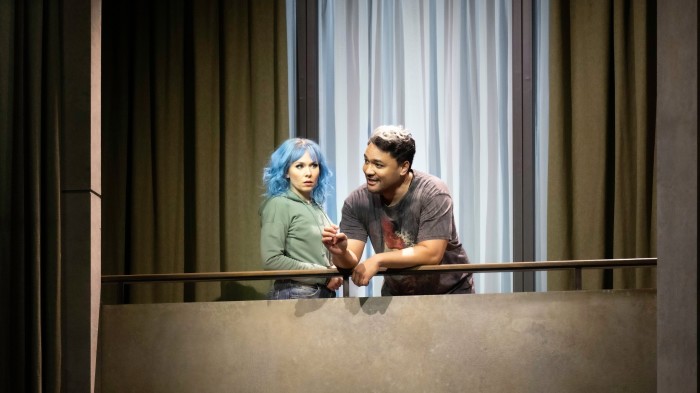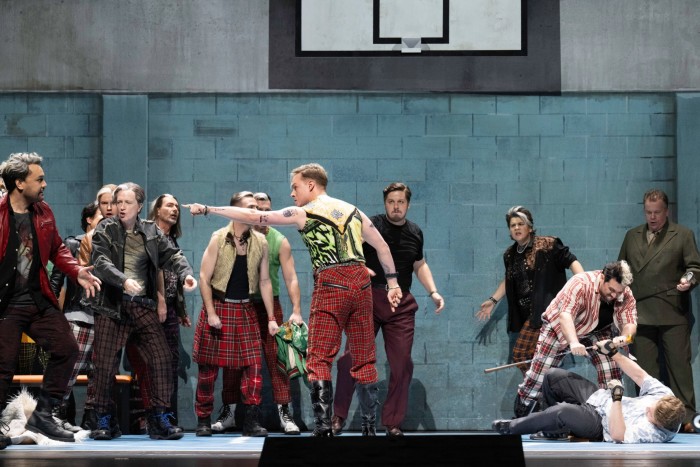
Unlock the Editor’s Digest for free
Roula Khalaf, Editor of the FT, selects her favourite stories in this weekly newsletter.
Berlin is threatened with a 10 per cent cultural funding cut, which is projected to have a catastrophic impact. What a shame we don’t get to choose where the cuts will fall. No doubt they will hit freelancers, educators and innovators hardest, while overpaid executives, top conductors and heavily hyped stars will probably not feel a thing. In this context, it was hard to watch Sunday night’s premiere of Gounod’s Roméo et Juliette at the Staatsoper Unter den Linden and not wonder: could the entire production not have been cut to save some much-needed euros?
Director Mariame Clément did such a good job with The Tales of Hoffmann this summer in Salzburg that it was fair to expect a strong Roméo et Juliette from her in Berlin. On paper, her concept sounded solid — colourful youth, symbolised by a butterfly, at war with the dull, monochromatic world of adulthood.
And the idea could have worked. The curtain lifts to reveal a mirror image of the auditorium seats; the chorus enters costumed like us, the audience; next, we are in an expensive villa, where Juliette, with blue hair and jeans, is the outsider at her family’s soirée. But from this point, the evening stalls. Despite frequent and elaborate set and costume changes (Julia Hansen), Clément does little more than tell an old story in an old-fashioned way, framing it as the play-within-a-play we have seen so often in opera stagings that you might think they could recycle the sets.
The Montagues are tartan-clad punks; the Capulet weapon of choice is a golf club. While Juliette sleeps before her fateful wedding night, we are treated to a strangely gratuitous dance scene in which multiple Juliettes sway and twirl. (Nothing against this rare chance to hear Gounod’s often-cut ballet music — but surely there are better things to do with it?) Clément’s absorption with her own mise-en-abyme has blinded her to the need for actual content, and we are left with a series of slick but empty gestures.

In the title roles, Elsa Dreisig’s radiant upper register, crystalline coloratura and girlish charm almost save the evening; Amitai Pati sings exquisite duets with her, and delivers some lush melodic lines, but grows audibly weary as the evening grinds on.
That must owe something to the forceful conducting of Stefano Montanari. He finds little levity in Gounod’s score, treating it as heavy drama, to the detriment of the singers. Though all the smaller roles are competently sung, they often have to fight against the full weight of the orchestra, which plays with vigour but little subtlety.
★★☆☆☆
To November 24, then returning in May 2025, staatsoper-berlin.de/en

